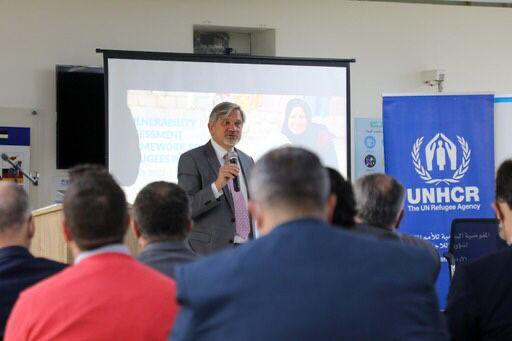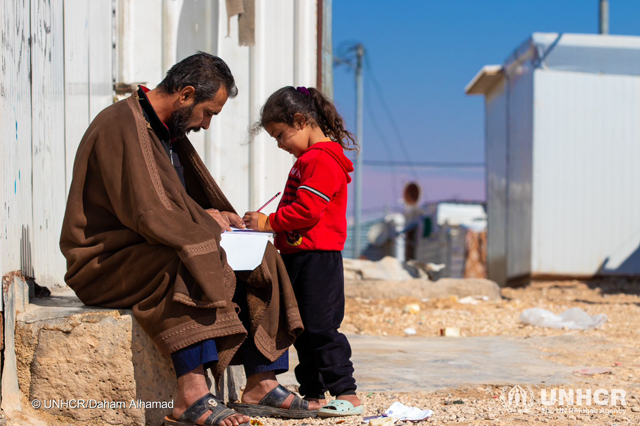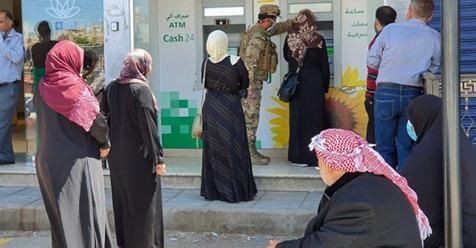You are here
UNHCR launches ‘Assessment Report’ for situation of refugees in Kingdom
By Ilham Darwazeh - Jul 31,2024 - Last updated at Jul 31,2024

A total of 3,658 Syrians returned to Azraq Refugee Camp, some 100km east of Amman and 20km west of the town of Azraq in Zarqa Governorate, in the first half of 2015 (Photo by Muath Freij)
AMMAN — The United Nations Refugee Agency (UNHCR) recently launched the Assessment Report for the year 2024 in the Kingdom in June to draw the attention of international donors and the community, to the humanitarian status of refugees’ crisis in Jordan.
UNHCR Representative to Jordan Dominik Bartsch has recently warned of the situation of refugees turning into a “humanitarian crisis” if donor support is not sustained.
Bartsch explained that there is clear evidence that the humanitarian crisis is already happening.
The UNHCR said “Now at this late stage, acknowledging the situation of refugees to redouble our efforts. An example is when the World Food Programme [WFP] and the World Bank [WB] came together in 2011 to cooperate with UNHCR.”
The survey has interviewed over 34,000 refugees of Syrian, Iraqi, and other nationalities.
The survey also sheds light on the climate vulnerability index for refugees, describing the effects of the rain, water, and sandstorms on the camp, which is causing families to leave camps.
Ahmad, a refugee, talked about the situation in camps in winter “Caravans are made of Lincoln, their life-expectancy is 5 years, but now caravans have been used to 10 years.”
He added that UNHCR used to do maintenance, but not anymore, and that during winter, there were infiltrations, and they use pockets which causes health consequences and allergy.”
The representative also said, “More sustainable solutions are needed for their situation in Jordan, especially for refugees in camps that are more vulnerable to economic and climate shocks”.
WFP food assistance decreased to JD20 per person per month. Ahmad also explained that more than 10 people live in one caravan 3m in length, and 2m in width, and there is no privacy.
Mona, a Yemeni refugee living in Amman and volunteer, highlighted the consequences of cutting assistance to families in sending children to work, this caused children to withdraw from school, beg, and have early marriage of daughters to release some financial burdens.
WFP director said that the support for health reference to hospitals is very tight due to of not having financing capacity. “The situation is deteriorating fast and declining” therefore it is necessary to stretch and prioritise refugees. He also stressed that refugees state loud and clear that they are willing to stay in Jordan.
The report further demonstrated that refugees are eager to achieve self-reliance and contribute to their host communities, rather than depending solely on humanitarian assistance and coupons provided by UNHCR. They show a willingness to work and generate their own income.
Jordan Resident Representative of the WB Holly Benner commended Jordan as a role model for hosting refugees though it is a middle-income country, adding that “the concern is that Jordan is already facing economic challenges not only humanitarian response”.
The poverty rates have increased by 67 per cent up from 57 per cent in 2021, among 489 thousand registered refugees in Jordan, recording the highest number of poverty among Syrian Refugees, according to the WB analysis of the VAF data.
Dominic called for progressive global access to the local market to “create solutions”, in how to collectively come together and respond in sustainable self-reliance, livelihood contribution to Jordan’s economy, and create win-win solutions, by cooperation between government, donors and agencies.
Holly said that the WB programmes integrated service delivery, health and water. Also, she has explained the approach of the new WB programmes in Jordan that have cross-cutting themes for the next five years.
Related Articles
AMMAN — Sixty-four per cent of refugees in Jordan survive on less than JD3 a day, according to a joint vulnerability assessment of refugees
AMMAN — UNHCR’s new socioeconomic survey 2024 on refugees in Jordan shows a reemergence of a humanitarian crisis, about which the Agency has
AMMAN — Starting this week, approximately 18,000 vulnerable refugee families will receive one-off emergency cash assistance from the UNHCR,














